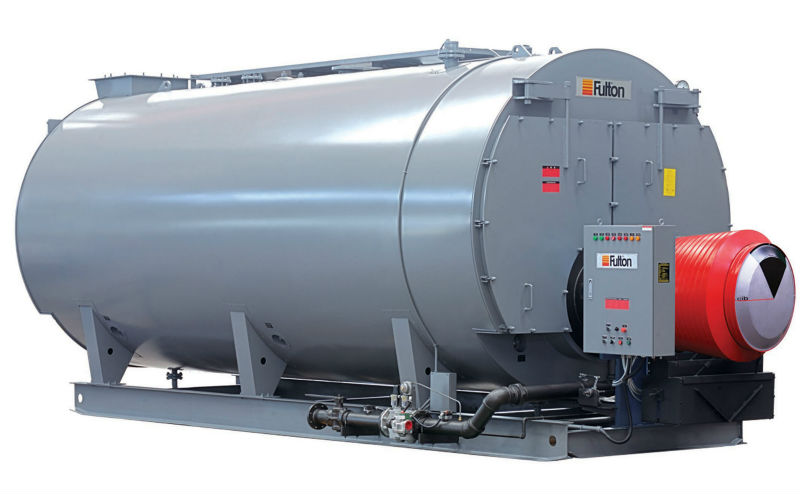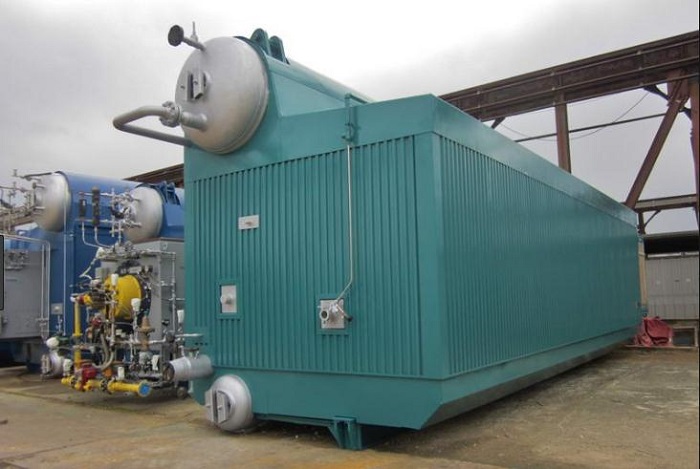Package boiler is one of the popular boiler types. They are widely used around the world. So we dedicated an article to talk about its definition, parts, application, and how it works and give you a few tips about its maintenance. Do you want to learn about them? Then read this article from Linquip to expand your knowledge about boilers.
What is a Package Boiler?
Package boiler definition is not so different than any other boiler type’s definition. According to Wikipedia, “Package boilers are used for heating and act as a steam generator for small power purposes such as self-powered industrial plants.” Just like any other boiler, they provide steam for different purposes. In this case, it’s used for producing a small amount of steam because of the size of this type. Although the structure of this boiler is complex, but the good news is that they are pre-packed in the factory and you don’t need to assemble the system in the destination!
Package Boiler Parts
This boiler consists of different parts including:
– Combustion Chamber
The combustion chamber is the place where the combustion from the burner happens in order to create hot gasses to create steam.
– Heat Exchanger
The heat exchanger is responsible to transfer the heat that has been created by the combustion chamber to the fluid.
-
Valves
There are different valves used in the package boiler such as a safety valve, backflow valve, etc.
-
Supply Lines
These lines are designed to take the heated fluid to the distribution point of the boiler.
-
Return Lines
The cooled fluid will be brought back to the boiler through return lines for re-heating purposes.
-
Fan
The fan helps to keep the combustion constant by forcing the air into the chamber.
-
Water Drum / Steam Drum
They are used to store the steam generated in the water-tubes and the also work as a phase separator for the mixture of water and the steam.
Different Package Boiler Types
These boilers have three types: D-type, A-type, and O-type. The difference between these three is in the number of their water drum and steam drum. The D-type has one water drum and one steam drum while the A-type has two water drums and one steam drum. The O-type has one water drum and one steam drum but is a little simpler than the A-type.
How does it Work?
Package boilers can be water-tube or fire-tube. They use fuel in the form of gas or liquid. By igniting this fuel in the combustion chamber, they create explosion inside the boiler and remain in this state with the help of a fan that forces air into the chamber and creates a tornado effect. This effect creates turbulence and keeps the furnace pressurized as well as keeping the flame ignited. The pressure in the boiler is under control and the extra pressure will be released to the outside environment to provide a safe procedure at all times. The water-tube form uses the heat to heat up the water inside the boiler and turns the water into steam. On the other hand, the fire-tube ones transfer the heat by physical contact. Package boilers usually have an internal furnace tube and include two or three-pass fire-tube boiler. The classification of this boiler type is based on the number of times that hot combustion gasses actually pass through the tubes. These types are: single pass, two-pass, and three-pass. Though, they can also be categorized into Dry-back boilers and Wet-back boilers.
Package Boiler Application
These boilers are suitable for small-scale power purposes and cannot cover the needs of large-scale power plants because of their size. They are suitable for self-powered industrial plants.
Package Boiler Maintenance
If you have a package boiler you need to set regular appointments with an expert for constant maintenance checkups. Preventing small problems from turning into huge disasters enables you to not only save money in the long run, but also maximize the efficiency of your package boiler. Plus, you need to keep the boiler clean and make sure no dust or unnecessary particles block the way of the boiler’s performance.
Package Boiler Advantages and Disadvantages
One of the great advantages of this boiler type is that you don’t need to assemble different parts at the place and can be delivered as a whole assembly. Plus, they can be easily installed and are great for small areas due to their compact design. They are cheaper than many of their counterparts since they have an automatic burner management system. Another advantage of a package boiler is that it has a low maintenance cost.
Among the advantages of this boiler type, it is mentioned that it uses induced or forced draft system that enables the boiler to have better airflow and as a result, greater efficiency. It also needs less man power since most of the process happens automatically. One of the great aspects of its design is that it includes multiple tubes resulting in better heat transfer compared to its counterparts.
Just like any other boiler, this boiler type has some down points too. The construction of this boiler is a bit complex and cleaning the tubes that are inside the boiler is a little difficult and needs extra effort. Although the cost of using such a boiler is low, the initial cost of a package boiler is high. Plus, it is not suitable for producing a large amount of steam.
Now you know all there is to know about package boilers and how they work. Feel free to write a comment below and tell us what you think about this boiler type. And if you need an expert to help you choose the right boiler or repair your current boiler, sign up on Linquip and one of our skilled experts will get in touch with you right away.





